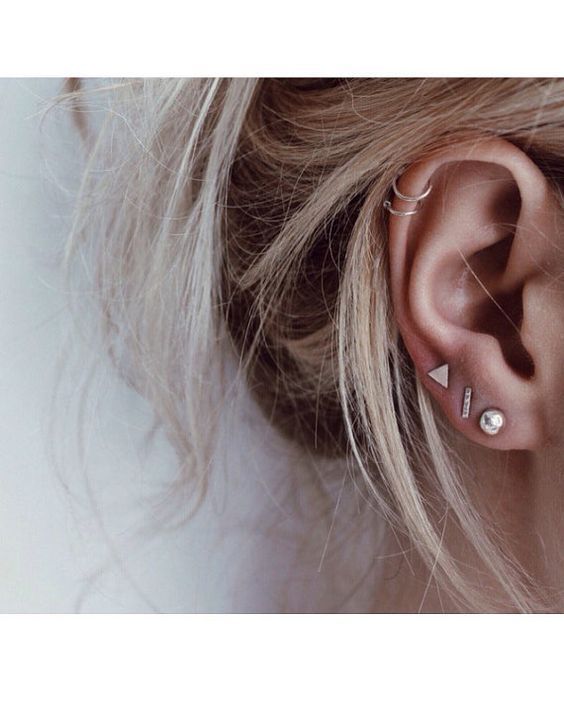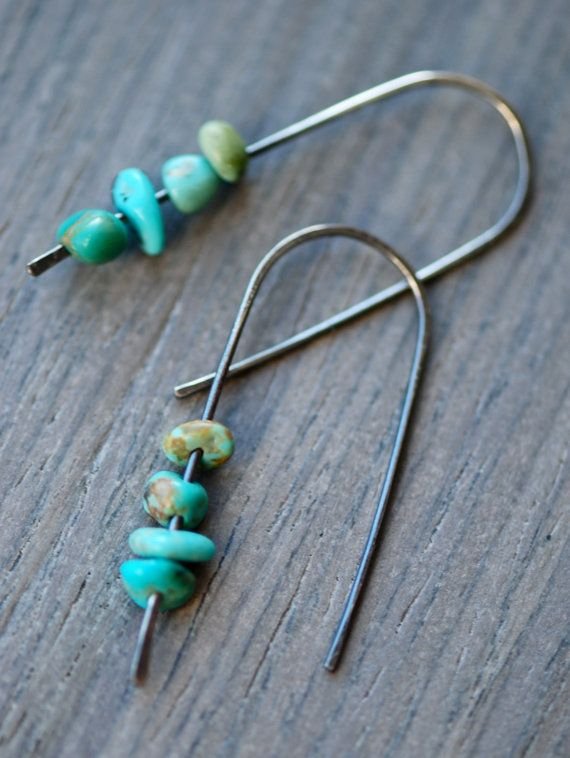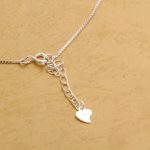Beaded jewelry has been a popular form of adornment for centuries, adding elegance and personal flair to outfits. But where did beaded jewelry originate? The origins of beaded jewelry can be traced back to ancient civilizations across the globe, with each culture adding its own unique touch to this timeless accessory.
Historically, beads have been used not only for their decorative purposes but also for religious, social, and symbolic significance. From Ancient Egypt to Mesopotamia, beads were often crafted from precious materials like gold, gemstones, and shells, showcasing the wearer’s status and wealth. In other cultures like Native American tribes and African societies, beads held spiritual meaning and were believed to bring protection or good luck.
As time went on, the art of creating beaded jewelry evolved, with different styles emerging in various regions. Each culture developed its techniques for stringing beads and creating intricate patterns that reflected their artistic traditions. Today, beaded jewelry continues to be a popular accessory worldwide, blending traditional craftsmanship with modern trends to create unique pieces that appeal to people of all ages.
Historical Origins of Beaded Jewelry
Beaded jewelry has a rich history that dates back to ancient times, with evidence of its existence found in various cultures around the world. The question often arises: where did beaded jewelry originate? While the exact origins are difficult to pinpoint, archeological findings suggest that beads have been used for adornment and ritualistic purposes for thousands of years. Let’s delve into the historical origins of beaded jewelry and explore how this art form evolved over time.
Ancient Origins of Beaded Jewelry
- One of the earliest known examples of beaded jewelry dates back to around 30,000 years ago, where shells and animal bones were intricately carved and strung together to create necklaces and bracelets.
- Around 5000 BC, ancient Egyptians were known to have used beads made from materials like glass, clay, and semi-precious stones in their jewelry pieces. These beads were often symbolic and represented aspects of their culture and beliefs.
- In Mesopotamia, which is considered one of the cradles of civilization, beaded jewelry was also prevalent. Sumerians used beads made from lapis lazuli, carnelian, and other precious materials in their ornamental pieces.
Beaded Jewelry Across Different Cultures
- In Africa, various tribes such as the Maasai in Kenya and Tanzania are known for their vibrant beadwork. Beads hold cultural significance among these tribes and are often used in ceremonies and rituals.
- Native American tribes also have a long history of creating intricate beaded jewelry. Each tribe has its unique style and patterns that reflect their traditions and stories.
- In Asia, countries like India have a deep-rooted tradition of using beads in jewelry making. Indian beadwork is known for its intricate designs and vibrant colors, often seen in traditional attire.
As we can see from these examples across different cultures, beaded jewelry has always held a special place in human history, serving not only as decorative accessories but also as symbols of cultural identity and spiritual significance. The evolution of this art form throughout centuries continues to inspire modern trends in jewelry design today.
Ancient Beaded Jewelry From Different Cultures
Beaded jewelry has a rich history that dates back thousands of years, with evidence of its existence found in various archaeological sites around the world. The question of where did beaded jewelry originate often leads to different ancient cultures that used beads as adornments and symbols of status and spirituality. One of the earliest known examples of beaded jewelry comes from Ancient Egypt, where intricate bead necklaces and bracelets were worn by both men and women.
In Mesopotamia, the Sumerians and Babylonians crafted stunning beaded jewelry using materials like lapis lazuli, carnelian, and gold. These beads were not only decorative but also held symbolic meanings related to religious beliefs and societal hierarchies. In China, jade beads have been found in tombs dating back to the Neolithic period, showing how beads were not just for ornamental purposes but also had spiritual significance.
The Native American tribes also have a long tradition of creating beaded jewelry, with each tribe having its unique style and designs. For example, Plains Indians used intricate beadwork on leather garments for ceremonial purposes while the Navajo people are renowned for their use of turquoise and silver beads in their jewelry. These diverse cultural influences have contributed to the widespread popularity of beaded jewelry today, showcasing a timeless art form that continues to evolve with modern trends.
| Ancient Civilization | Significance |
|---|---|
| Ancient Egypt | Intricate bead necklaces and bracelets worn by both men and women |
| Mesopotamia (Sumerians & Babylonians) | Beads made with lapis lazuli, carnelian, gold; held symbolic meanings related to religious beliefs |
| China (Neolithic period) | Jade beads found in tombs; spiritual significance beyond decoration |
Significance of Beads in Different Societies
Beaded jewelry holds significant cultural and symbolic value in various societies around the world. The use of beads in jewelry has been traced back to ancient times, where they were not just worn as ornaments but also held spiritual and ceremonial meanings. In many cultures, beads were believed to have protective qualities, bringing luck, warding off evil spirits, and even serving as a form of currency.
Native American Beadwork
One of the most well-known traditions of using beads in jewelry comes from Native American communities. Beadwork has been an integral part of Native American culture for centuries, with each bead telling a story or conveying deep spiritual meaning. From intricate patterns on clothing to elaborate beaded necklaces and earrings, Native American beadwork is a beautiful reflection of their heritage and traditions.
African Beadwork
In Africa, beads are also highly significant in various cultures. Different tribes use beads to represent social status, ancestry, fertility, and protection. The vibrant colors and unique designs of African beadwork often reflect the rich history and diverse traditions of these communities. Each bead is carefully selected and crafted into stunning pieces that hold personal or communal significance.
Asian Beadwork
Similarly, in Asian cultures, beads are more than just decorative elements in jewelry. In countries like India, China, and Japan, beads have been used in religious ceremonies, traditional dances, and even as part of healing practices. The intricate artistry involved in creating beaded jewelry reflects the deep-rooted beliefs and customs within these societies. Whether it’s prayer necklaces or auspicious bracelets, Asian beadwork is a manifestation of cultural pride and spiritual devotion.
The significance of beads in different societies goes beyond mere adornment; it serves as a way to connect individuals to their heritage, spirituality, and community values. As we continue to appreciate the beauty of beaded jewelry today, it’s essential to recognize the profound meanings behind each carefully crafted bead that has been passed down through generations across the globe.
Evolution of Beaded Jewelry Styles
Beaded jewelry has a rich history that spans across different cultures and time periods. The evolution of beaded jewelry styles showcases the creativity and artistry of individuals in various societies. From simple designs to elaborate creations, the styles of beaded jewelry have evolved over centuries, reflecting changes in fashion, tradition, and craftsmanship.
Throughout history, beaded jewelry styles have varied greatly depending on the culture and region where they originated. Different techniques such as stringing beads, weaving patterns, and using various materials like gemstones, glass beads, metal beads, and even seeds have contributed to the diversity of beaded jewelry styles worldwide. Here are some examples of beaded jewelry styles from different cultures:
- Ancient Egyptian: The ancient Egyptians were known for their intricate beadwork, using materials like clay, faience beads, and semi-precious stones to create stunning pieces.
- Native American: Native American tribes like the Navajo and Zuni used beads made from natural materials like shells, turquoise, coral, and bone to create colorful necklaces, earrings, and bracelets.
- African: African tribes such as the Masai in Kenya and the Ndebele in South Africa are renowned for their vibrant beadwork which is often used to adorn clothing or ceremonial regalia.
As time passed, these traditional styles of beaded jewelry began to influence modern trends in fashion. Today, you can see a fusion of traditional techniques with contemporary designs in beaded jewelry collections by designers all over the world. Whether you prefer classic elegance or bold statement pieces, there is a wide range of beaded jewelry styles available to suit every taste and occasion.
Materials Used in Beaded Jewelry Throughout History
Beaded jewelry has a rich history that dates back centuries, with evidence of its existence found in various cultures around the world. The materials used in creating these intricate pieces have evolved over time and have played a significant role in the cultural significance and symbolism of beaded jewelry. From ancient times to modern trends, the materials utilized have varied based on availability, technological advancements, and cultural preferences.
In the earliest forms of beaded jewelry, natural materials such as shells, bones, seeds, and stones were commonly used due to their abundance and ease of manipulation. These materials were often sourced locally and reflected the natural elements of the environment where the jewelry originated. For example, Native American tribes used beads made from turquoise, coral, and shell in their intricate designs, which held spiritual significance within their communities.
As civilizations advanced and trade routes expanded, new materials began to influence the creation of beaded jewelry. Precious metals like gold and silver were incorporated into designs for royalty and elite members of society. Gemstones such as diamonds, sapphires, and rubies also became popular choices for creating luxurious beaded pieces that conveyed wealth and status. The use of glass beads became widespread with the introduction of beadmaking techniques that allowed for a wider range of colors and designs.
| Materials Used | Historical Significance |
|---|---|
| Shells | Commonly used by Native American tribes for spiritual significance |
| Precious Metals | Incorporated into designs for royalty and elite members of society |
| Gemstones | Popular choices for creating luxurious beaded pieces to convey wealth and status |
| Glass Beads | Widespread use due to beadmaking techniques allowing for a variety of colors and designs |
Modern Trends in Beaded Jewelry
Beaded jewelry has a rich history that dates back thousands of years, with origins that can be traced to various cultures around the world. However, in modern times, beaded jewelry continues to hold a special place in the fashion world, with ever-evolving trends and styles that cater to different tastes and preferences.
One of the most prominent modern trends in beaded jewelry is the use of natural materials and sustainable practices. With an increasing focus on environmental consciousness, many jewelry designers are opting for beads made from materials such as recycled glass, wood, seeds, and semi-precious stones. These eco-friendly pieces not only add a unique touch to any outfit but also contribute to a more sustainable fashion industry.
Another popular trend in modern beaded jewelry is the incorporation of personalized elements. Customizable bead bracelets or necklaces allow individuals to express their style and personality through unique combinations of colors, shapes, and sizes. Whether it’s adding initials, birthstones, or symbols that hold personal meaning, personalized beaded jewelry adds a special touch to any ensemble and makes for thoughtful gifts for loved ones.
In addition to sustainable practices and personalized elements, minimalist designs have also become increasingly popular in modern beaded jewelry. Simple yet elegant styles featuring delicate beads arranged in clean lines or geometric patterns offer a sophisticated look that can easily transition from day to night.
These minimalist pieces are perfect for those who prefer understated elegance and versatility in their accessories. As trends continue to evolve, one thing remains certain – the enduring beauty of beaded jewelry will always have its place in the ever-changing landscape of fashion.
How to Care for Beaded Jewelry
Beaded jewelry has a long and fascinating history, with origins that can be traced back to ancient cultures around the world. From intricate beaded necklaces to stunning bracelets, these pieces have been cherished for centuries for their beauty and significance. But as much as we admire these pieces of jewelry, it is essential to know how to properly care for them to ensure they last for many more years to come.
Storage
To maintain the beauty and integrity of your beaded jewelry, proper storage is key. When not in use, it is best to store your beaded jewelry in a soft pouch or a jewelry box with compartments to prevent tangling or damage. Avoid tossing your beaded pieces into a crowded drawer where they can easily get scratched or entangled with other items.
Cleaning
Regular cleaning is important to keep your beaded jewelry looking its best. To clean beads, gently wipe them with a soft, damp cloth to remove any dirt or oils that may have accumulated from wearing them. For stubborn stains or dirt, you can use a mild soap solution and a soft brush to gently scrub the beads. Be sure to dry the beads thoroughly before storing them away.
Avoid Harsh Chemicals
When caring for your beaded jewelry, it is crucial to avoid exposing them to harsh chemicals such as perfumes, lotions, hairsprays, and cleaning products. These substances can cause discoloration or damage to the beads over time. It is best practice to put on your beaded jewelry after applying any beauty products and remove them before using household cleaning agents.
By following these simple tips on how to care for your beaded jewelry, you can help preserve their beauty and extend their lifespan. With proper care and maintenance, your beloved beaded pieces can continue to bring joy and elegance for many years ahead.
Conclusion
Beaded jewelry has a long and rich history that spans across various cultures and civilizations. From ancient times to modern trends, beads have played a significant role in ornamentation and self-expression. The question “where did beaded jewelry originate” leads us on a journey through time and geography, revealing the enduring appeal of these intricate adornments.
Throughout history, beads have been crafted from a wide range of materials including stones, shells, metals, and even plant seeds. Each culture brought its unique style and symbolism to beadwork, creating pieces that not only serve as accessories but also carry deep cultural meanings. Whether used for religious ceremonies, social status symbols, or personal adornment, beaded jewelry has always held a special place in the hearts of people around the world.
In today’s fast-paced world of fashion, beaded jewelry continues to thrive as a timeless accessory that adds a touch of elegance and personality to any outfit. Whether it’s a simple string of beads or an elaborate beaded necklace, these pieces have the power to connect us to our past while also allowing us to express our individuality.
As we continue to appreciate the beauty and craftsmanship of beaded jewelry, we honor the ancient traditions and cultural significance behind each bead that adorns our bodies.
Frequently Asked Questions
Who Invented Beaded Jewelry?
The origins of beaded jewelry date back thousands of years, with various cultures around the world contributing to its development. While it is difficult to pinpoint a single individual who invented beaded jewelry, it is safe to say that it has been a part of human adornment since ancient times.
What Cultures Use Beads?
Beads have been used in a wide range of cultures worldwide for both ornamentation and spiritual significance. Indigenous cultures in North America, Africa, Asia, and Oceania have a long history of using beads in traditional jewelry-making practices. Additionally, beads are also popular in contemporary fashion across different cultures.
Which Country Is Famous for Beads?
India is known for its rich tradition of bead-making and intricate beadwork. Specifically, regions like Rajasthan and Gujarat are famous for their vibrant and ornate bead designs that are incorporated into traditional attire and jewelry. Indian bead artisans are highly skilled in producing intricate patterns using a wide variety of materials.

Welcome to my jewelry blog! My name is Sarah and I am the owner of this blog.
I love making jewelry and sharing my creations with others.
So whether you’re someone who loves wearing jewelry yourself or simply enjoys learning about it, be sure to check out my blog for insightful posts on everything related to this exciting topic!





